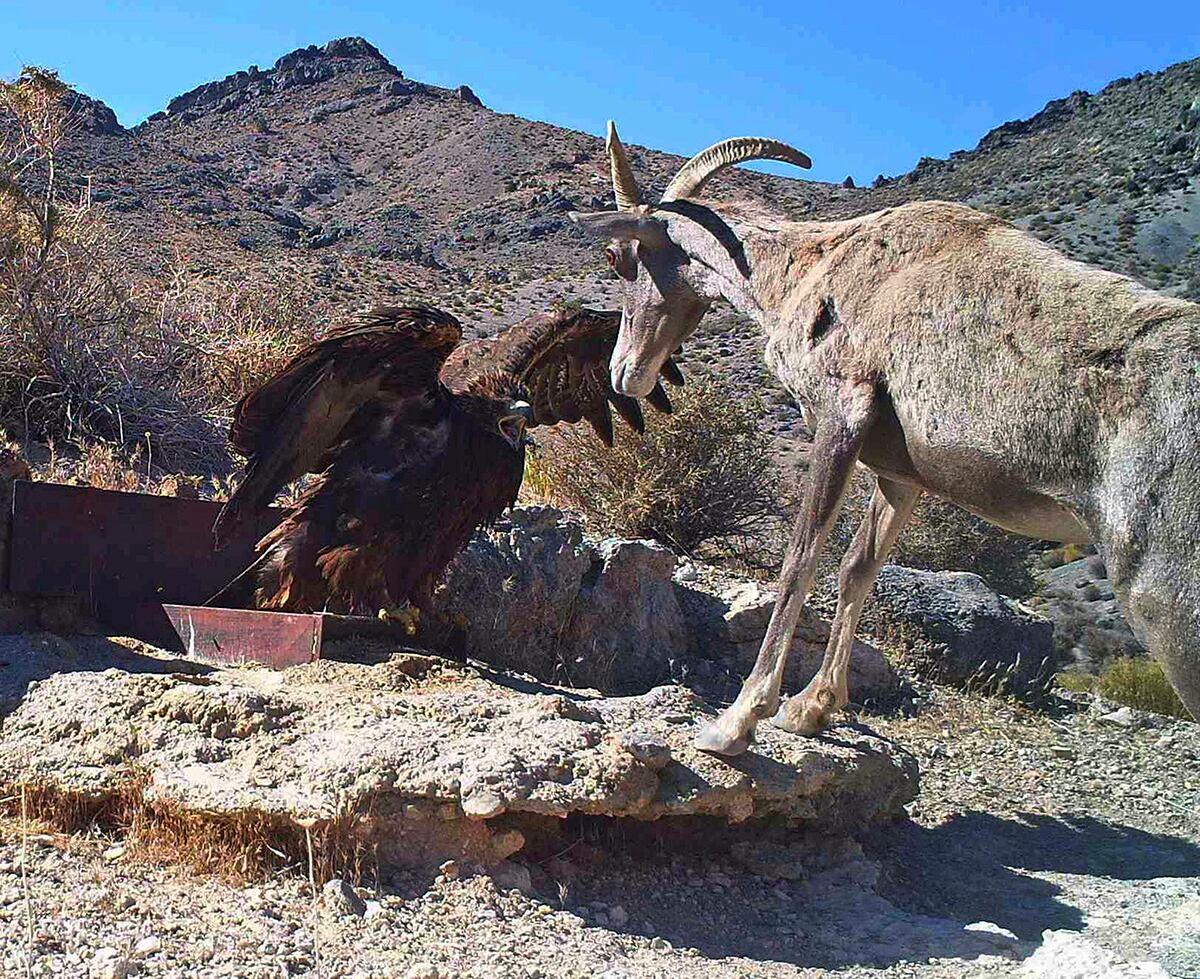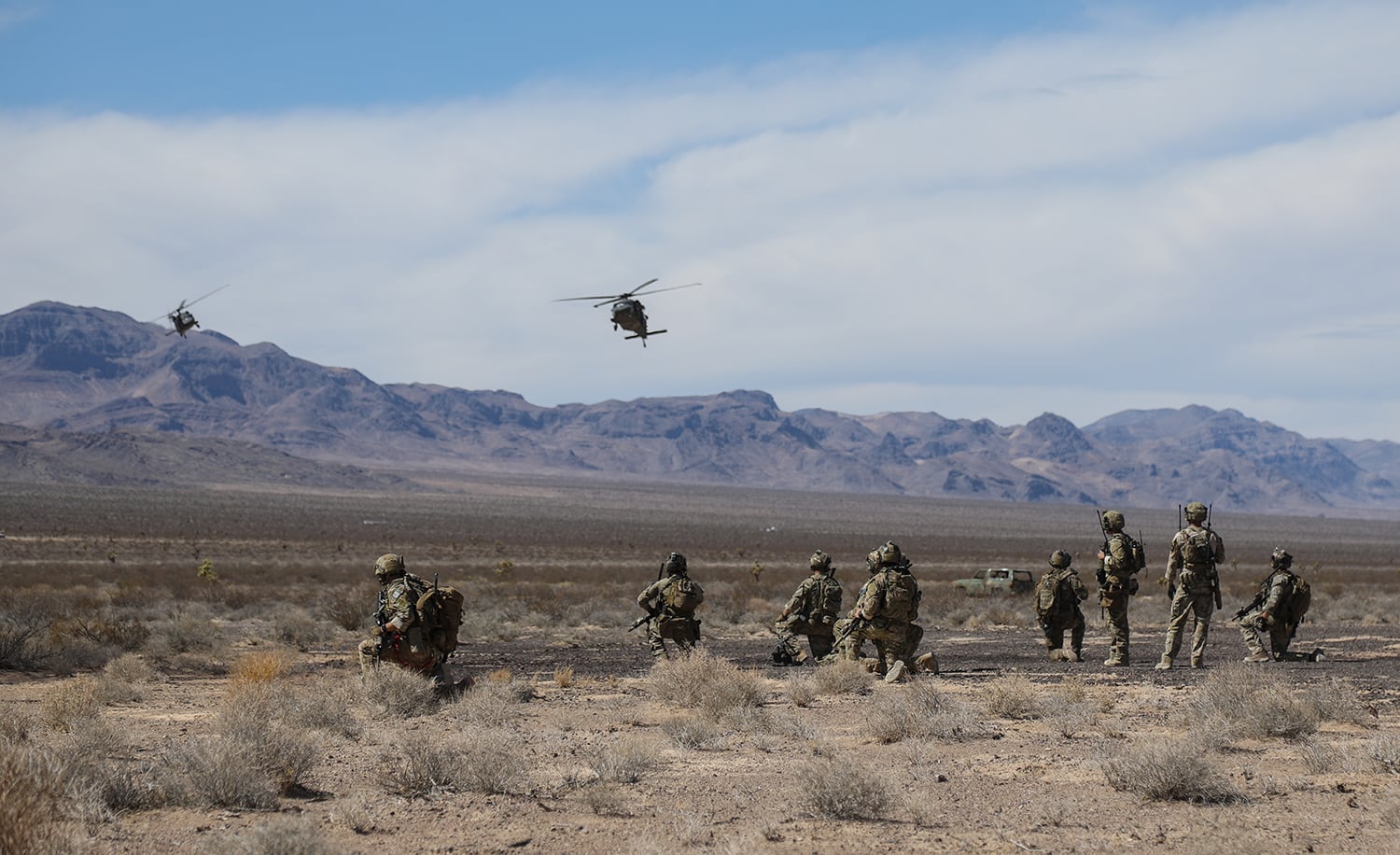CARSON CITY, Nev. — Conservationists are rallying around a pair of legislative resolutions opposing the U.S. Air Force’s proposed expansion of a bombing training range they say would threaten big horn sheep and other wildlife at a national refuge in southern Nevada.
The conflict pits the interests of the military’s Nevada Test and Training Range, the largest of its kind in the world, against those of the Desert National Wildlife Refuge, the largest U.S. refuge outside Alaska.
Established in 1940, the military range covers 4,531 square miles of federal land — nearly as big as the state of Connecticut — and already includes about half of the 2,031-square-mile refuge created in 1936.
The proposal that requires congressional approval would withdraw an additional 468 square miles (1,212 sq. kilometers) currently co-managed by the U.S. Fish and Wildlife Service for military purposes 30 miles (48 kilometers) northwest of Las Vegas.
State Sen. Melanie Scheible, D-Las Vegas, and Assemblywoman Lesley Cohen, D-Henderson, said the non-binding resolutions they've introduced in their respective chambers are aimed at protecting a refuge home to some of the most unique wildlife habitat in the country.
"Expanding the military testing area into the refuge would decimate irreplaceable petroglyphs, sand dunes, and wild animal populations," Scheible said.
"It would threaten the survival of the desert bighorn sheep and the desert tortoise and cut off public access to areas of great cultural, spiritual and recreational value," added Cohen.

The Air Force first filed notice in August 2016 of its intent to study the expansion of the "pre-eminent range for testing and evaluation of weapons systems, tactics development and advanced combat training."
"The range and its infrastructure are quickly becoming outdated as rates of technological development of new weapons system and electronic warfare systems accelerate," the Air Force said in an environmental impact statement last October. "Since enemy technology has become increasingly advanced and complex, more space is needed to replicate threat configurations."
For example, modern aircraft approach their targets at an altitude of 30,000 feet (9,144 meters) — three times the altitude of older aircraft — and launch missiles from up to 12 miles (19 kilometers) away.
Dozens of people turned out in Carson City and Las Vegas on Tuesday and Wednesday to testify in support of the anti-expansion resolutions currently being considered by the state Senate and Assembly committees on natural resources.
The Las Vegas Review-Journal reported no one spoke in favor of the expansion. Leaders of the Montana-based Wild Sheep Foundation say it could derail efforts to support about 600 bighorn sheep in the Sheep Range, which boasts some of the species' best habitat in the world.
"Nevada has given enough to the military," said Las Vegas architect and outdoor enthusiast Eric Roberts, according to the newspaper. "Nevada's given enough land to have a 51st state in the union. It's time we keep some for ourselves."

Congress is expected to act on the matter by 2021, when the existing land withdrawal last renewed in 1999 is scheduled to expire.
The USAF EIS said that in order to increase realism, some blank small arms, hand flares, smoke grenades, paint balls or other training munitions are expended during certain operations.
But Rebekah Mattes, a public affairs specialist for Nellis Air Force Base, said none of the alternatives under consideration would increase or change any bombing target impact areas. She said the range would continue to be co-managed with the U.S. Fish and Wildlife Service.
“The Nevada Test and Training Range is a critical national asset and we take our responsibilities for environmental management and stewardship of the range seriously,” she wrote in an email to The Associated Press.




